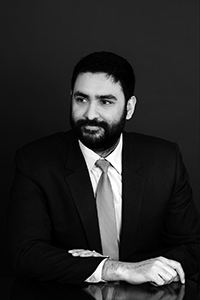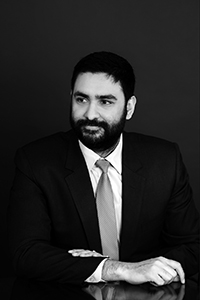 In either view, the question of limitation does not arise. Throughout March 2002 the applicant sought, without success, to obtain genetic tests or an abortion. It was revealed that the foetus had Turner syndrome. She was then 23 weeks pregnant. Two subsequent scans confirmed the possibility that the foetus was malformed. An examination of the Court’s case best Chandigarh law firm indicates that article 3 has been most commonly applied in contexts in which the risk to the individual of being subjected to any of the proscribed forms of treatment emanated from intentionally inflicted acts of State agents or public authorities.
In either view, the question of limitation does not arise. Throughout March 2002 the applicant sought, without success, to obtain genetic tests or an abortion. It was revealed that the foetus had Turner syndrome. She was then 23 weeks pregnant. Two subsequent scans confirmed the possibility that the foetus was malformed. An examination of the Court’s case best Chandigarh law firm indicates that article 3 has been most commonly applied in contexts in which the risk to the individual of being subjected to any of the proscribed forms of treatment emanated from intentionally inflicted acts of State agents or public authorities.
It may be described in general terms as imposing a primarily law firm negative obligation on States best advocates in Chandigarh to refrain from inflicting serious harm on persons within their jurisdiction. However, in light of the fundamental importance of article 3, the Court has reserved to itself sufficient flexibility to address the application of that article in other situations that might arise. 2 (1,5): it means “total amount of income, profits and gains referred to in sub-section (1) of section 4, computed in the manner laid down in this Act”.
It is not whether the claimed top advocate in Chandigarh invention top law firms in Chandigarh could deliver the goods, but whether the claims cover other ways in which they might be delivered: ways which owe nothing to the teaching of the patent or any principle which it disclosed. Worboys had driven his taxi to a police station. By notifications issued in October 1958, May 1959 and April 1960, the Mysore Public Service Commission invited applications for the recruitment of 80 probationary Assistant Engineers-. The applicant had an amniocentesis on 26 March 2002.
It is clear, therefore, that the NIHRC has power to challenge “any legislation or act” without being its victim. In R (Lord Carlile of Berriew) v Secretary of State for the Home Department [2015] AC 945 Lord Sumption at para 22 said: The notion of “deference” to the elected institutions has not been without criticism. She did not receive the results until 9 April. The expression, “total income” is defined in S. The applicant thereafter requested an abortion, but that request was refused because under the applicable domestic best Chandigarh law firms, the last point at which an abortion could be undertaken on the basis of foetal abnormality was 24 weeks, and that time limit had expired.
In RR v Poland it was discovered at the 18-week scan of the applicant in February 2002 that the foetus she was carrying might have a malformation. 4, the EPO Technical Board of Appeal observed that it was “But the fact that the skilled man following the teaching of Biogen 1 would have been able to make HBcAg and HBsAg in bacterial cells, or indeed in any cells, does not conclude the matter. The principle remains the foundation of modern patent law, and is recognised in the case law of both the United Kingdom and the European Patent Office.
Eventually, on 21 March 2002 a scan confirmed that the foetus was malformed. Section 16, insofar as it is relevant, provides “(1) In computing the, total income of an assessee- (a) any sums exempted under the first proviso to, subsection (1) of section 7, the second and third provisos to section 8, sub- sections (2), (3), (4) and (5) of section 14, section 15, section 15B and section 15C shall be included, and any sum exempted under section 15A shall also be included except for the purpose of determining the rates at which income-tax (but not super-tax) is payable by the assessee to whom the exemption is given; In EXXON/Fuel Oils (T 409/91) [1994] OJ EPO 653, at paras 3.
 (iii) Failure to collect CCTV evidence. I think that in concentrating upon the question of whether Professor Murray’s invention could, so to speak, deliver the goods across the full width of the patent or priority document, the courts and the EPO allowed their attention to be diverted from what seems to me in this particular case the critical issue. If police officers had checked the CCTV footage, they could have identified the registration number and this would have led them to Worboys; The timing of his arrival at and departure from the police station was known.
(iii) Failure to collect CCTV evidence. I think that in concentrating upon the question of whether Professor Murray’s invention could, so to speak, deliver the goods across the full width of the patent or priority document, the courts and the EPO allowed their attention to be diverted from what seems to me in this particular case the critical issue. If police officers had checked the CCTV footage, they could have identified the registration number and this would have led them to Worboys; The timing of his arrival at and departure from the police station was known.
It is not clear why the original version of section 71(1) (set out in para 175 of Lord Kerr’s judgment) referred to section 69(5)(b), but it had the effect of preventing the NIHRC bringing proceedings to challenge “any legislation or act”, because the NIHRC could never (or hardly ever) claim to be a victim of such legislation or act. – The qualifications, pay, age limit and other conditions for eligibility were prescribed by these notifications.
That defect was recognised by the House of Lords in In re Northern Ireland Human Rights Commission [2002] NI 236 and the problem dealt with by deleting the reference to section 69(5)(b) in section 71(1) and expressly providing top legal services in Chandigarh section 71(2A) that the prohibition did not apply to the NIHRC. In this view the question of limitation raised by the appellant does not call for a decision, for in the case of the A schedule property the 2nd respondent loses on the question of title and in regard to the C Schedule property he will be presumed to be in possession.